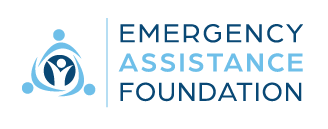
Prosocial Motivation: Increase Employee Productivity and Connection While Building Your Fund
May 21, 2019
Nonprofit Board Roles and Responsibilities
June 21, 2019June 10, 2019
One of the first steps to establishing a Disaster and Hardship Relief Fund is to define its charitable class. The charitable class is simply the criteria used to determine WHO can receive a grant from the fund.
The IRS defines charitable class as, "The group of individuals that may properly receive assistance from a charitable organization...” *
A fund’s charitable class defines which individuals may apply for and receive a grant.
While elements like WHAT occurred to make someone apply for a grant, WHEN such an event occurred and HOW MUCH money the applicant is applying for, are factors to consider when reviewing grant applications, they are NOT part of defining a charitable class.
Some best practice examples to help a sponsoring organization establish its charitable class criteria are as follows:
Best Practices Model:
- Employed by XYZ or its affiliates on the date of the application; and
- Regularly scheduled to work 30 or more hours per week; or
- On approved medical leave or an approved leave of absence for no more than one year.
A few more examples of charitable class criteria alternatives are as follows:
(It is important to note these are NOT recommendations. This is simply a list of examples that some relief fund programs choose to include when defining their charitable class criteria.)
- Contract team members
- Full-time team members (defined as those who work a minimum of XX hours per week)
- Retirees
- Part-time team members
- Active team members
- All team members worldwide
- Team members on approved leave of absence
- Team members based in U.S. only
- Team members on FMLA (Family Medical Leave Act)
- Non-US team members
- Team members of affiliates
- or possibly others who are not team members such as people living within 1 kilometer of the facility
Audits of self-administered funds have revealed that many relief funds are out of compliance with federal regulations due to common mistakes that are easy to miss. One of the most common mistakes found is including “waiting periods” in the charitable class definition such as, “employed for 30 days”. This type of criteria also conflicts with the regulatory requirement stating a relief fund cannot be portrayed as an “Employee Benefit.”
*Source: http://www.irs.gov/pub/irs-tege/eotopick99.pdf





